Sourcing bhindi from Dubai and caviar from Russia, chefs in the city are not willing to compromise on offering the best taste on the table

Chef Beena Noronha knows the role of the diverse flavour profiles of Mexican chillies, ranging from spicy to tangy to fruity, is sure to pique the interest of culinary enthusiasts, She says, those who know, know
A few weeks ago, Chef Manuel Olveira launched Vamos Brunch at La Loca Maria, Bandra. Vamos means Let’s go in Spanish and it features Olveira’s favourite dish Maria’s Benedict which is poached eggs, served on an English muffin, with hollandaise, poached salmon and, hold your fork—oscietra caviar (Russian Sturgeon roe, native to the Caspian Sea). No standalone restaurant in the city serves caviar on their breakfast menu and it costs Olveira a whopping R10,000 per 30 g. The salmon, too, is Norwegian and costs Rs 1,990 per kg. The dish is Rs 1,650. This means more often than not, Olveira bears the cost of the caviar. “We want to serve our guests the best. They’ll remember us once they get used to caviar because that’s where they first had it.”
ADVERTISEMENT
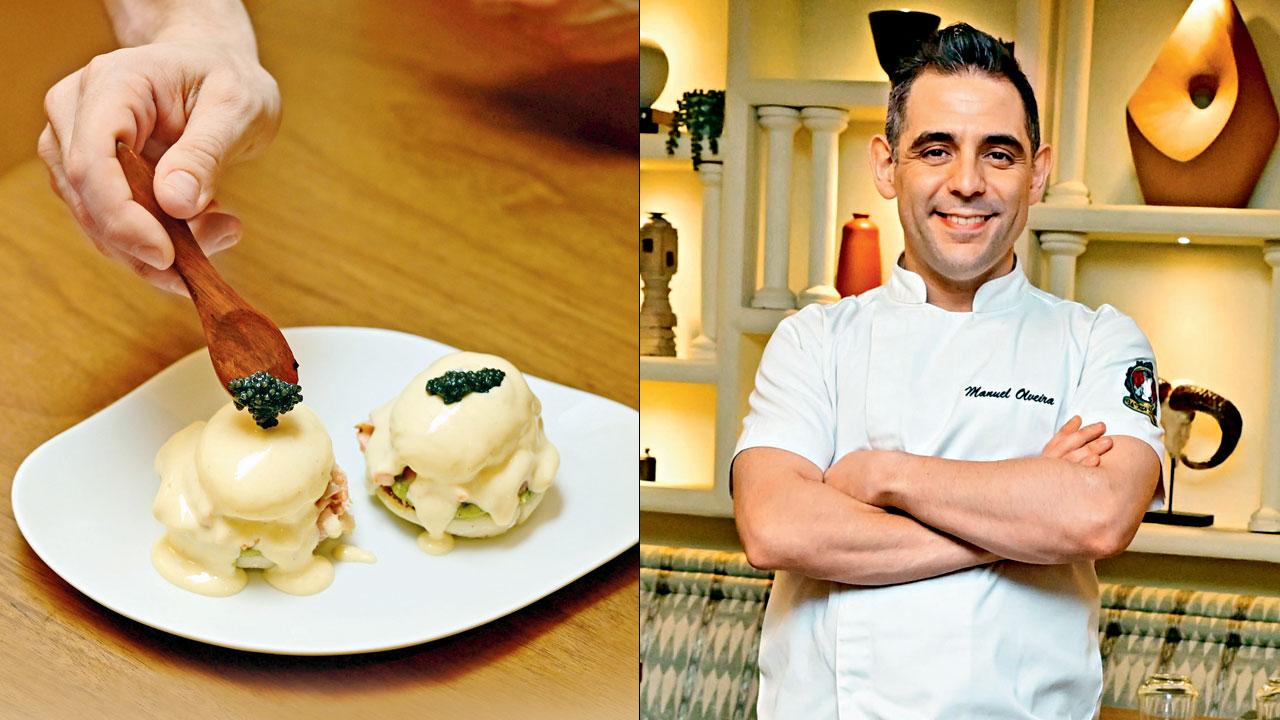
Chef Manuel Olveira wants to serve his guests the best, even if it means he has to take up some of the cost of the expensive, imported ingredients
Nothing comes close to the rich flavour, firm texture, and flakiness of the salmon from Norway, which can be attributed to the cold, clean waters there. “Oscietra caviar is highly sought after, renowned for its nutty, creamy flavour. Together, the distinct flavours elevate the simplicity of eggs benedict by creating a luxurious, multi-layered flavour experience,” Olveira adds.
Sourcing however, isn’t always easy. At Lyla, BKC, for instance, Chef Beena Norhona sources the Mexican ancho, pasillo, arbol and guajillo chillies for the lamb birria quesatacos from an importer in China because one cannot import directly from Mexico. “You need direct contacts and import licence, which aren’t easy. Of course, we look for local produce as much as possible, but being a speciality restaurant, certain ingredients cannot be compromised. Mexican chillies offer a wide range of flavour profiles—from spicy to tangy to fruity, each bringing a distinct character to the dish. For instance, the ancho is sweet, smoky, and mildly spicy, with flavours reminiscent of raisins, coffee, and chocolate. In contrast, the pasilla is earthy and rich with berries, chocolate, and liquorice notes. The guajillo is tangy and sweet with a mild heat, featuring flavours of green tea, berries, and smoky undertones. In contrast, the arbol is hot, with a clean, straightforward heat and a slightly nutty flavour,” she adds. These are often out of stock, so to stay consistent on the menu, Norhona needs to order them in advance and store them properly.

The okra for Avatara’s Okra thecha comes from a supplier in Dubai
At The Table, Colaba, Will Aghajanian imports Belgian endives, NZ Haas avocado, truffles, caviar, New Zealand lamb, and Italian Carnaroli rice (for risotto) because there isn’t a quality Indian equivalent or because using the indigenous original is integral to the dish. “The local lamb is a suckling goat, so if one wants to use actual lamb, it is the imported one. They are different in flavour too,” he adds.
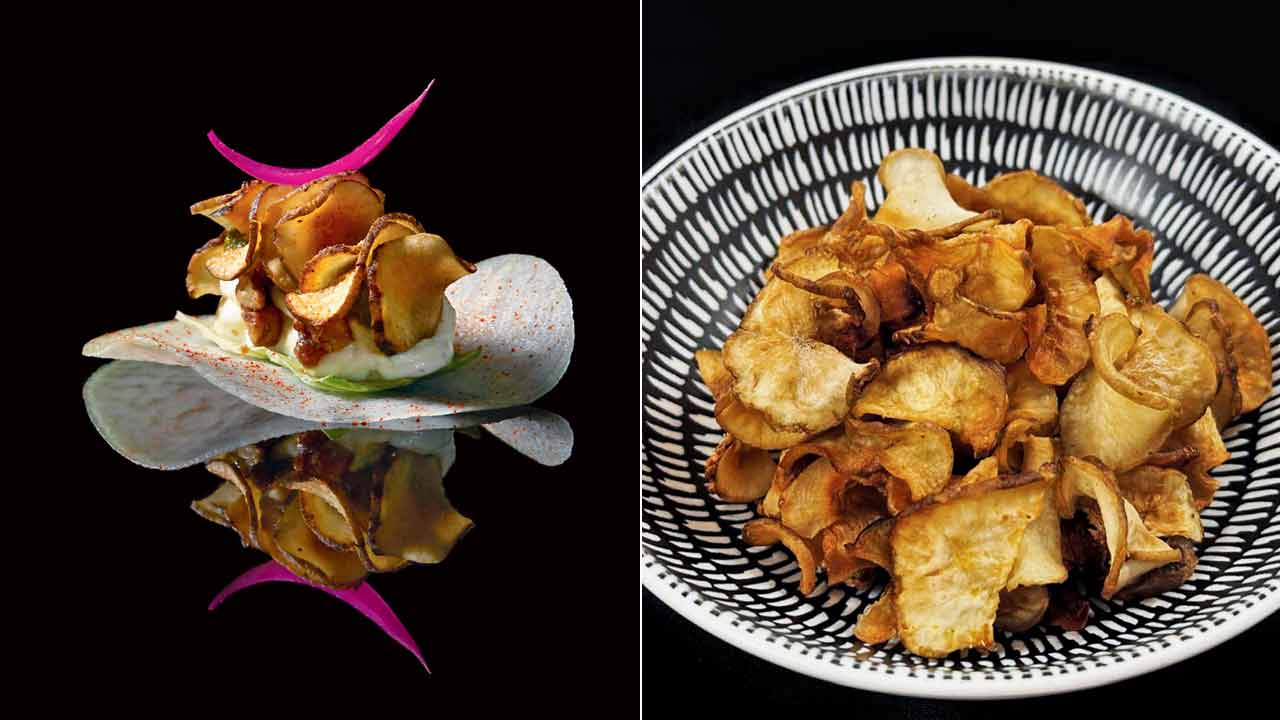
Chef Sarfaraz Ahmed says while many ingredients are available locally, there is a massive difference in the quality standard of the imported variants’ colour, flavour, and size
At Akina, Chef Rahul Punjabi calls for yukari shiso seeds from Aichi Prefecture of Japan at Rs 1,730 per kg. These are roasted and ground to be used as a seasoning for sesame cucumbers. Chukka wakame (R2,500 per kg) and kai sou seaweed from Ariake sea fisheries in Japan (R2,200 per kg) are used in the seaweed salad. “The chukka wakame comes in fresh, and the kai sou is an algae that we rehydrate. It gives a soft snap to the salad. The taste and texture of seaweed depend on the mineral content of the ocean water. The microorganisms, krill, school fish, and predatory fish all work together like one living organism, giving ocean water in Japan a unique umami that transfers onto the seaweed. The chukka wakame that we source comes packaged in the original ocean water maintaining the unique flavour. It is a subtle taste that Japanophiles can appreciate,” says Punjabi.

Sarfaraz Ahmed
Similarly, the best quality shiso grows in Japan, and the farmers there believe in using all parts of the plant. “On our research trips to Japan, we noticed the chef using yukari as a garnish for nigiri, and the flavour and crunch were lovely. Taking inspiration, we chose to source yukari and use it as an umami crunch for our dish.” Sandhita is a warm salad at Avatara with broccolini (a mix of kale and broccoli) that they source from Chiang Mai, Thailand, at R1,500 per kg. It adds a crunch to the salad and pairs perfectly with baby carrots, lending its mellow taste with slightly bitter notes and a bit of sweetness and crunch.
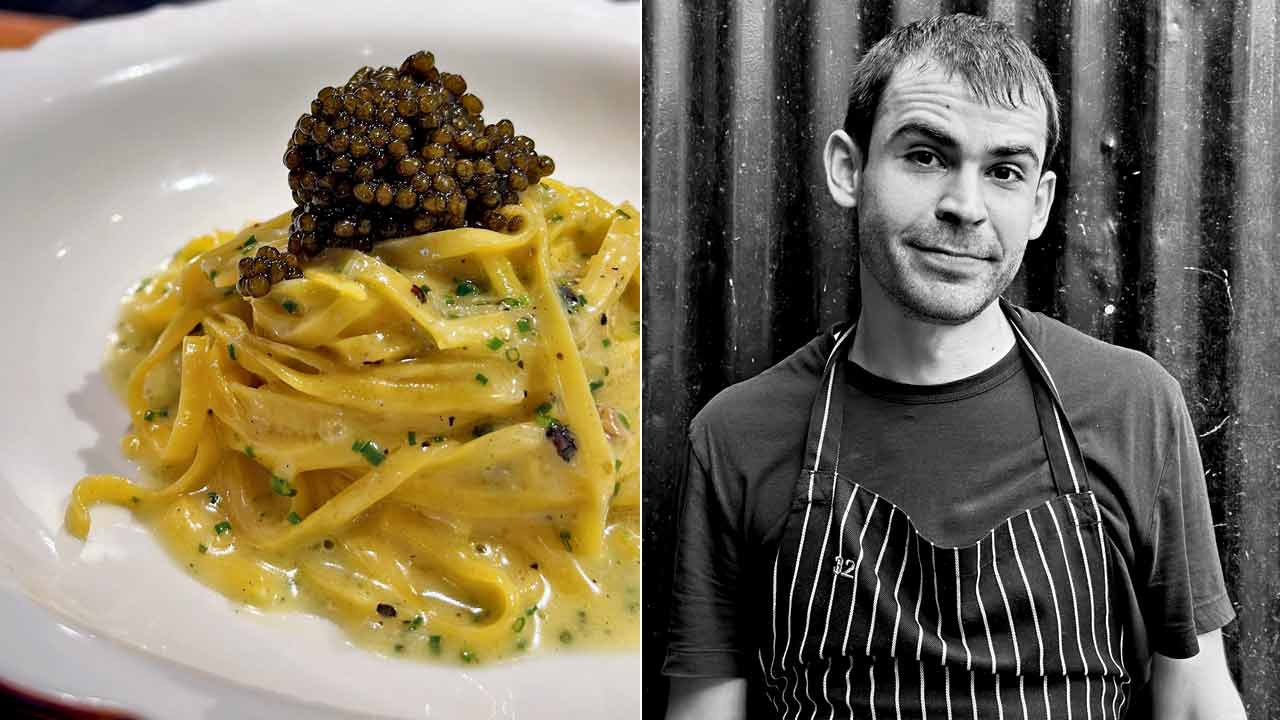
Will Aghajanian
For Carnival’s kohlrabi taco, Jerusalem artichoke comes from Holland at R1,800 per kg. A native of North America, artichokes are cultivated in Europe and are in great demand. Served as the first course as a part of their 14-course degustation menu, artichoke is served as a mere garnish, as fried chips, but it lends a smoky flavour and crispy texture to go perfectly with the yoghurt cremieux. For their tandoori portobello steak, the portobello mushroom comes from France. Chef Sarfaraz Ahmed, Carnival By TresInd, Santacruz and TresInd, BKC says, their restaurants struggle to find high-grade quality produce from India. “We have tried sourcing the mushrooms locally; however, being native to Europe and specifically in France, the cremini mushroom are our best bet for its meaty texture and umami flavour to cater to the vegetarian audience looking for a rich experience” he adds.
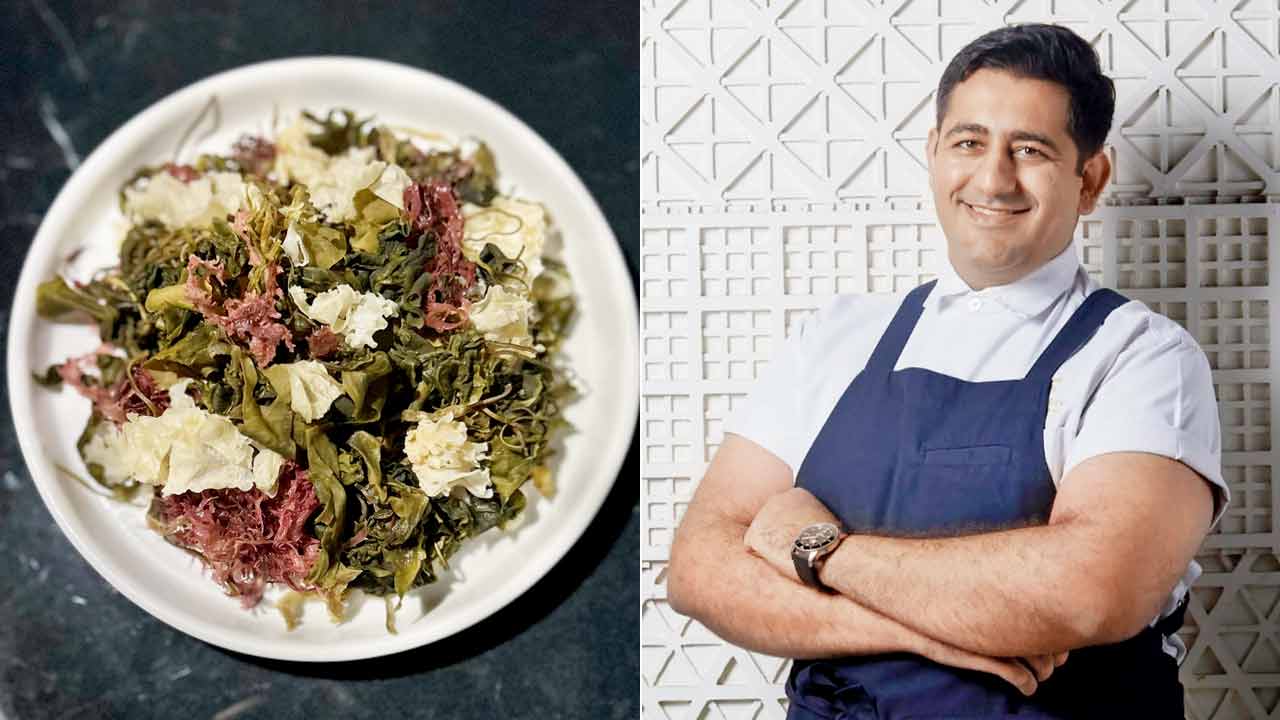
Wakame and Rahul Punjabi
Exotic ingredients aren’t the only thing that is imported. For vegetarian restaurant Avatara, Head Chef Sanket Joshi imports parsnip from Holland at R1,400 per kg for a dish called Vrihi. Although it is grown in India, some of the best parsnip comes from Europe, where it grows on hills. The cold climates help develop their sweet flavour. Also, our topical climate makes it challenging to grow the root vegetable year-round in India. “Parsnip has lovely, nutty and earthy peppery notes. When caramelised, it gives tartness and an umami flavour. It goes very well in pandra rassa (originally a non-veg delicacy), thus making it as close in flavour as the original,” says Joshi.
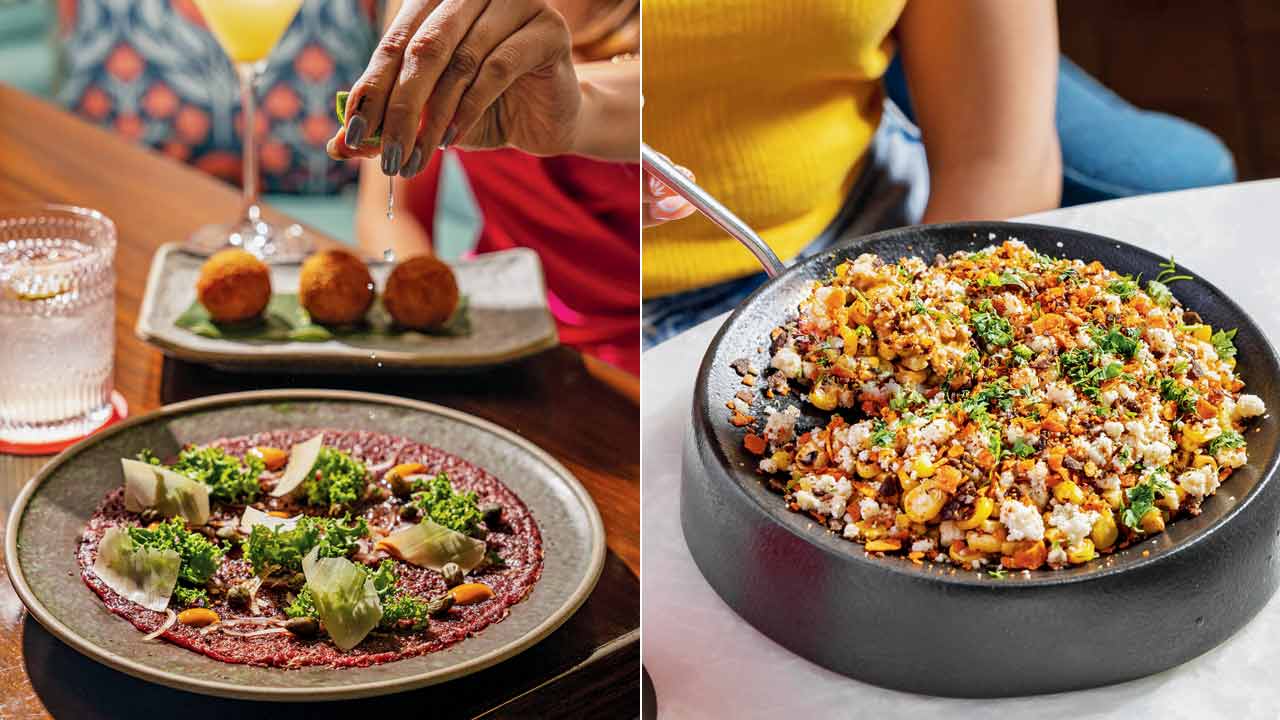
BUFF CARPACCIO and ESQUITES
For Alpahara, an okra chilli thecha, the okra—though available locally—is imported from Dubai. Joshi saw a massive difference in the quality standard of the ingredients’ colour, flavour, and size. “Interestingly, one source in Dubai matched the description we aimed to achieve. Okra has a subtle and grassy flavour, and thecha is the exact opposite, giving a robust punch of flavours,” says Joshi.
At Bandra Born, Chef Gresham Fernandes too imports a host of ingredients including meats, belgian pork, smoked and fresh salmon, duck, soy, sake, mirin and grana. “It’s crucial in maintaining the quality of our dishes with the best ingredients. For instance, I prefer using soy from Japan because they have a 1,000-year legacy of excellence. The same applies for the other ingredients we import. These choices ensure that every dish we serve meets the highest standards, honouring the culinary traditions we’ve built upon,” Fernandes adds.
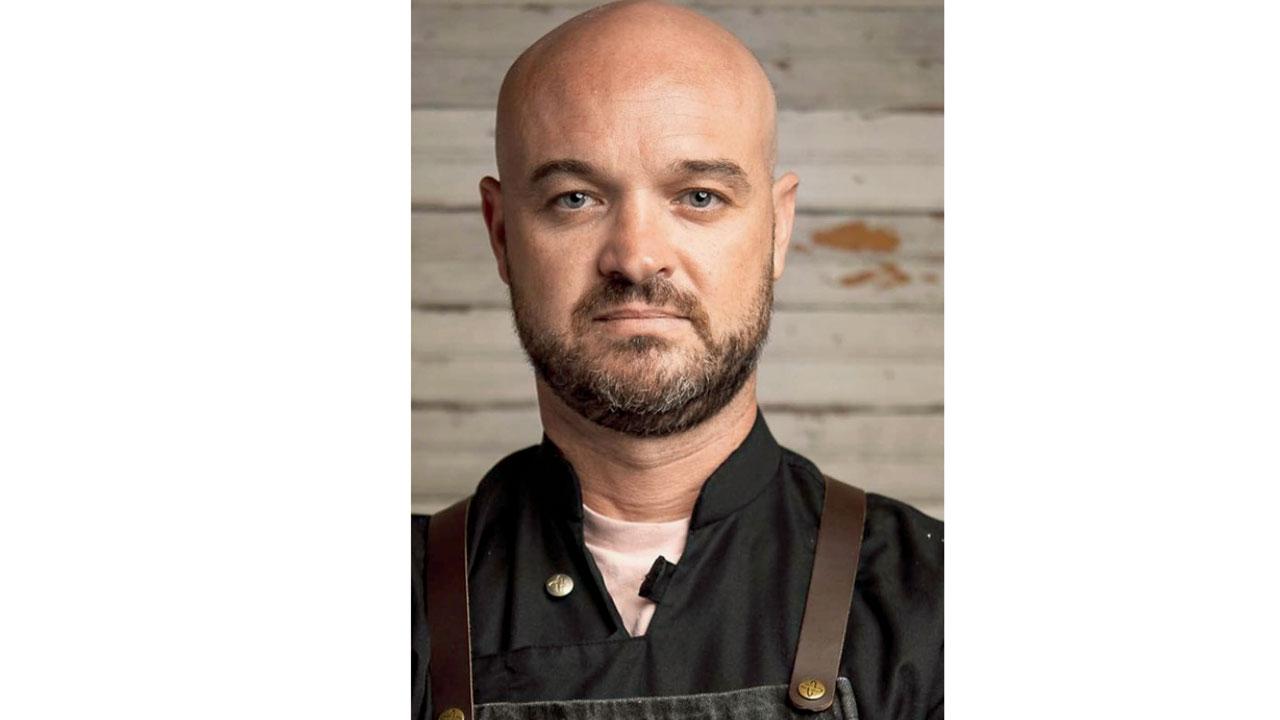
Jason Hudanish
At POMPA, Chef Jason Hudanish imports chipotle morita chilli, a darker, spicier version of dried chipotle used in different dishes and salsa or marinades. We use these in esquite or elote, where the chipotle aioli containing morita creates a spicy smokey flavour. The dish is topped with shaved corn and more morita powder and dorito mix, which also has morita. In buff carpaccio, we generously apply morita powder and oil to raw, thinly shaved buff finished by chipotle aioli, giving it a creamy texture. The Al pastor paneer taco, a new addition to the menu is topped with roasted tomato chipotle salsa, giving that heat and smokiness from the morita chilli. It’s a great spin on an al pastor style, typically done with pork,” he adds.
 Subscribe today by clicking the link and stay updated with the latest news!" Click here!
Subscribe today by clicking the link and stay updated with the latest news!" Click here!







